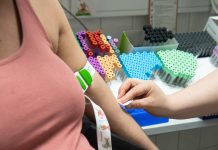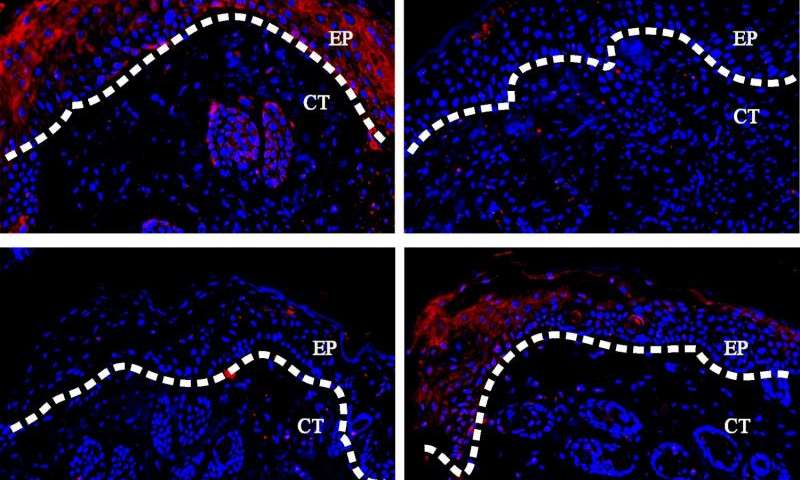Scientists at Joslin Diabetes Center have discovered one reason why infants with low birth weight have a high potential of developing type 2 diabetes later in life. In studies of mice, the researchers found that poor prenatal nutrition impairs the pancreas's ability to later secrete enough insulin in response to blood glucose.
"The bottom line is that if you don't have delivery of enough nutrients from the mother to the baby, the baby's pancreatic cells will be programmed abnormally," said principal investigator Mary-Elizabeth Patti, M.D., Assistant Investigator in Joslin's Research Section on Cellular and Molecular Physiology and Assistant Professor of Medicine at Harvard Medical School. "The effect doesn't show up until later on -- usually not until adolescence or adulthood.
"Many people believe we don't have much of a prenatal nourishment problem in the United States," she added. "But poor nutrition of a developing baby can occur in many ways other than inadequate nutrition of the mother. It also can occur with abnormal development of the placenta and its blood vessels, or high blood pressure, which damages vessels." In addition, many other factors can result in intrauterine growth restriction and low birth weight.
The Joslin study, published in the March edition of Diabetes, reinforces what scientists have known from previous studies in humans: Infants with low birth weight -- typically defined as under five and one-half pounds -- have a higher risk for developing type 2 diabetes.
To understand the reason, the researchers designed a series of experiments. Using ordinary mice that were not inbred or genetically altered in any way, they mated females with males, dating the day of their pregnancy, which lasts three weeks. They separated the mothers into two groups. The control group ate as much chow as they wanted during the entire pregnancy. The other group also was fully nourished during the first two weeks but undernourished during the third week, restricted to only half the amount. It had a dramatic effect. At birth, their babies weighed 23 percent less than the control group.
Continue Reading Below ↓↓↓
After delivery, all babies nursed and all mothers ate a full diet. "By the time the babies were weaned, at three weeks, the low-birth-weight group had caught up with the others, something we see in human babies too," said Dr. Patti. "They looked and acted the same. There was nothing outwardly different about them." The two groups of offspring ate the same chow diet, maintained a similar weight, and neither group was allowed to become overweight, eliminating this common risk factor for diabetes. The only difference was that the mothers had been fed differently during the final week.
As the young mice matured, the researchers tested their blood glucose (sugar) after meals. At age 2 months, the results were similar between the two groups. But over time, differences began to unfold. When 4 months old (comparable to human adolescence), the low-birth-weight babies began showing higher levels of blood glucose. "By 6 months, these levels had spiked abnormally, to 500 mg/dl -- the equivalent of serious, full-blown diabetes in humans," Dr. Patti said.
In type 1 diabetes, the pancreas cannot make the hormone insulin at all; about 1 million Americans must control this form by taking insulin injections. In type 2 -- a disorder affecting an estimated 18 million Americans -- the pancreas doesn't make enough insulin or the body's cells develop a resistance to its effect. Without insulin, glucose cannot get into cells to provide energy.
Normally, insulin levels rise or drop in response to glucose levels, keeping everything in balance. But diabetes is a complex metabolic disorder with numerous players such as high levels of blood glucose, cholesterol and other lipids. "The challenge is to figure out which factors are a primary cause of diabetes and which are a consequence, said Dr. Patti. "In our study, we needed to find out what was happening in these mice, before they got the problem."
Their insulin levels provided a clue. In the prenatally undernourished mice, the insulin secretion stayed about the same, regardless of the glucose level in the bloodstream. "That surprised us," Dr. Patti said. "The problem was not insulin resistance. It had something to do with insulin secretion." By contrast, babies who are born overweight (greater than 8 pounds) have higher risk of insulin resistance, not a secretion problem. Something different was happening in the experiment's low-birth-weight mice.
Did prenatal undernourishment cause the pancreas to not fully develop? The researchers found no difference in pancreas size or numbers of pancreatic beta cells, which produce insulin.
But cultures of the beta cells revealed the answer: the undernourished mice had an abnormal way of responding to glucose. "They were somehow 'programmed' to secrete a limited amount of insulin later in life, no matter what signal they got from glucose," Dr. Patti said. "The impairment was permanent. It couldn't be corrected even when the body caught up to normal weight."
Because studies of mice generally are good predictors of human biology, the Joslin study has important implications. "People and their doctors need to understand that prenatal undernourishment makes a person permanently at higher risk for developing diabetes, so prenatal care is important," Dr. Patti said. "Moreover, if someone was born with low weight, they need to pay special attention to prevention tactics, including exercise and weight control to minimize insulin resistance -- the other major factor involved in triggering type 2 diabetes.
"In particular, someone who was a low-birth-weight baby can compound the risk of developing diabetes by becoming overweight," she added. "The stage is set in two ways: low insulin production coupled with resistance to insulin -- a double whammy."
Other researchers involved in the Joslin study included co-authors Jose C. Jimenez-Chillaron, Ph.D., Marcelino Hernandez-Valencia, M.D.; also Carolyn Reamer, Simon Fisher, M.D., Ph.D., Allison Joszi, Ph.D., Michael Hirshman, Aysin Oge, M.D., Shana Walrond, Roberta Przybyla, Carol N. Boozer, D.Sc., of St. Luke's-Roosevelt Hospital Center in New York, and Laurie Goodyear, Ph.D., head of the Section on Metabolism at Joslin. The research was funded by the American Diabetes Association and the Adler Foundation.
Continue Reading Below ↓↓↓
Source: Joslin Diabetes Center










